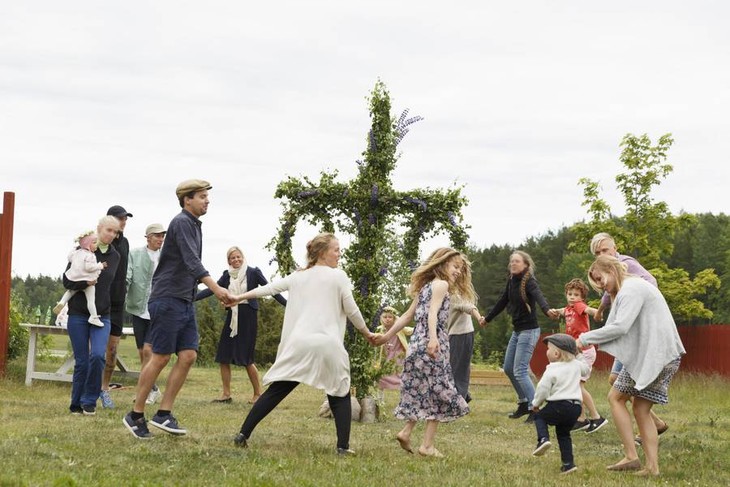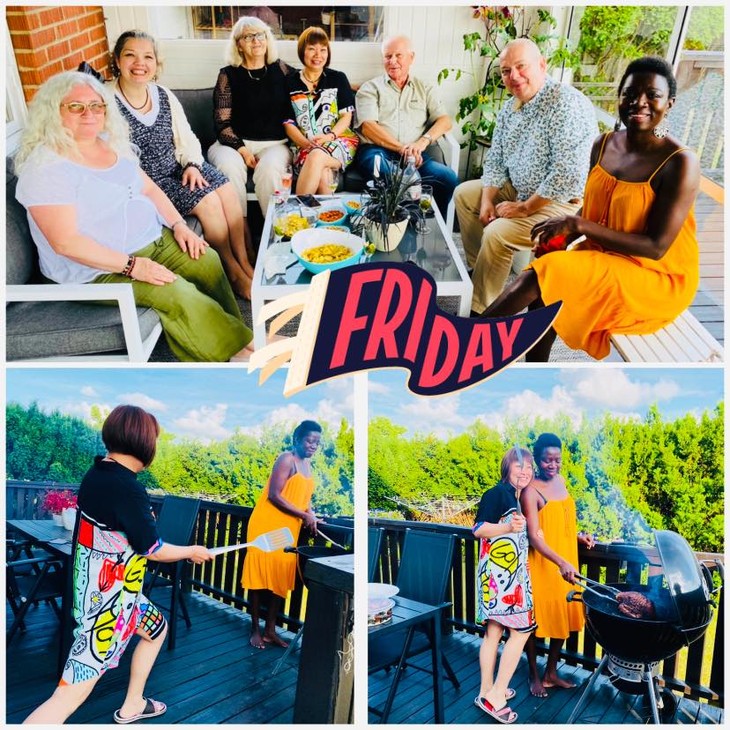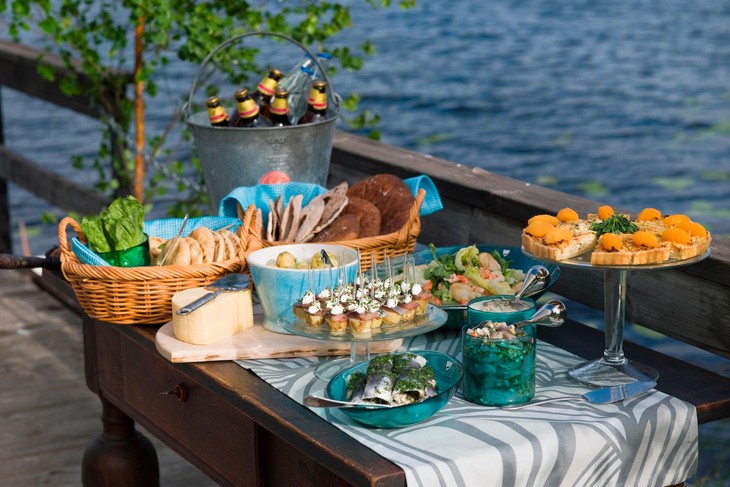(VOVWORLD) - The Midsummer Festival is one of Sweden’s most important holidays, a highly anticipated event when family and friends get together – at least, when there’s no raging pandemic. Today our guests, Gosta Palmkvist, a Swedish man and his Vietnamese wife, will tell us all about Sweden’s Midsummer festival.
 People dancing around the maypole on Midsummer Festival. (Photo: visitsweden.com) People dancing around the maypole on Midsummer Festival. (Photo: visitsweden.com) |
Bao Tram: Hi, Gosta. Hello, Huong! Welcome to VOV’s Cultural Rendezvous! Please introduce yourself to our listeners.
Gosta: Hello, my name is Gosta Palmkvist. I come from Sweden. My professional background is civil engineering in land administration and management. When I was chief advisor in a land administration program in Vietnam I met my wife Huong. Now I have retired from work.
Huong: Hello, my name is Huong Pham Palmkvist. I come from Hanoi. Before I moved to Sweden I worked at the Hanoi Club and Hilton hotel. Right now I’m living in the south of Sweden and working at Biltema logistic.
Bao Tram: How did the Midsummer Festival begin and when does it take place?
Gosta: Midsummer is the period in the summer when the daylight is the longest of the year. It is in the week between 20 and 26 June, but not on the same week day from one year to another. Midsummer Eve is always on the Friday in that week. In the north part of Sweden the sun doesn’t go down at all on midsummer and it is not dark in the night. In the south part where we live it is just dark for a few hours.
Midsummer celebrations originally developed from a Christian holiday about 500 years ago, but it was probably celebrated long before, being likely that the longest day of the year was celebrated specially.
Bao Tram: Why is Midsummer important for Swedes? For your family, for example?
Gosta: In past days midsummer was important as it was the period between sowing and harvesting the fields. The holiday was originally meant to celebrate fertility and praying for a good harvest. It was a break after hard farm work preparing for the efforts to come. Nowadays the midsummer actually means the beginning of the holiday period and is a traditional festival when families come together from different parts of the country, very much like the Tet holidays.
 The Midsummer gathering of Huong and her family members and friends The Midsummer gathering of Huong and her family members and friends (Facebook photo: Palmkvist Huong)
|
Bao Tram: What are the highlights of the celebration?
Gosta: The highlights of the celebrations are to spend time together with friends and relatives and relax after the cold and dark period of the year. In addition, there is one thing which can be considered typical for this celebration. That is the maypole, a tall pole with a cross-bar covered with leaves and flowers, which is in the center of the festivities. People join in childish dances around the pole, such as the frog dance.
Bao Tram: You are listening to music of a Midsummer celebration with people gathering and participating in the traditional frog dance. Now I want to ask Huong. After living in Sweden for 15 years, what impresses you most about this celebration?
Huong: Definitely watching all the different people get together and celebrate as friends, decorating the midsummer pole with beautiful flowers and leaves and then setting the pole into the ground. Then we all hold hands and sing and dance around the pole together. Because even though we are all strangers we are happy and excited to celebrate midsummer together.
Bao Tram: What do Swedes usually do to prepare for the occasion?
Huong: Well, there's a tradition where the young people pick 7 different types of flowers to put under their pillow during the midsummer night. They say that if you do that you will dream of your future loved one. On midsummer eve, we prepare a midsummer crown by binding flowers and leaves together to wear during the celebrations. We often head out the day before midsummer to pick strawberries that we’ll have as dessert later in the evening.
Bao Tram: Huong, when you see a midsummer pole, the main symbol of the occasion, do you think of the peach trees or Neu poles that Vietnamese people have at Tet, Vietnam’s traditional New Year Festival?
Huong: They are not the same but they are definitely similar. In Vietnam the “Cay neu” is a token of happiness and luck. We hang it outside our homes to banish all the evil beings away and to bring luck for the upcoming new year, while the midsummer pole is driven into the ground to ensure a wealthy harvest and happiness for the year. So, they are similar in the way that they are a symbol of luck and brings us good things for the future. But they are also different because the “Cay Neu” is for individual use while the midsummer pole is for bringing people together.
Bao Tram: Tell us about your first midsummer celebration after you came to live in Sweden.
Huong: The first time I celebrated midsummer I was very surprised as it was the first time I’ve seen such a celebration in the middle of summer. I was also very interested in what type of celebration it was because it’s so different from what I experienced in Vietnam before. Everybody in town got together in the park to decorate and dance around the midsummer pole. The children played with each other and every family brought their own Swedish fika (some kind of beverage, preferably coffee or tea) and had a picnic while listening to local dance bands. It was all very fun and I really enjoyed it!
Bao Tram: Hey Gosta! What kinds of sports or games are played during the event?
Gosta: Actually, no sports. We mainly play family games such as bowlers, crocket, and other fun games.
 The Swedes celebrate Midsummer with a relaxing lunch. The Swedes celebrate Midsummer with a relaxing lunch. (Photo: Johner Images/Alamy Stock Photo)
|
Bao Tram: Talking about festivals makes me think of food. Is there any traditional food or beverage associated with this event?
Gosta: For all Swedish celebrations and holidays, we eat different kinds of food and for midsummer we enjoy eating fresh salmon, eggs with caviar on them, fresh potatoes, herring, and of course strawberries with vanilla ice cream for dessert. As for beverages, we enjoy to drink shots of spiced vodka, called snaps. This type of beverage is drunk while singing drinking songs with a bright smile!
Bao Tram: Thank you, Gosta and Huong, for talking to us about Sweden’s Midsummer Festival.
Huong: No worries. You’re so welcome!
Gosta: Thank you and have a good day! Good-bye.